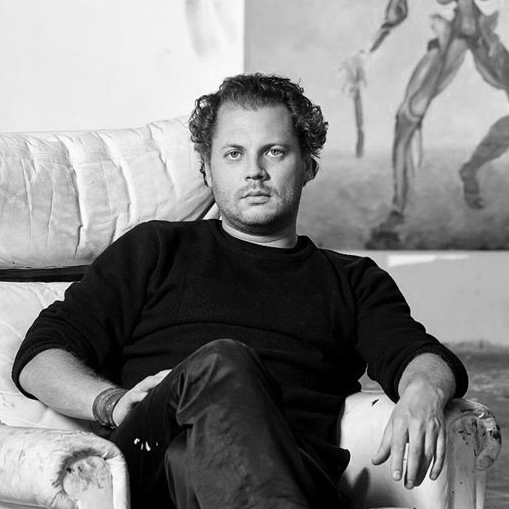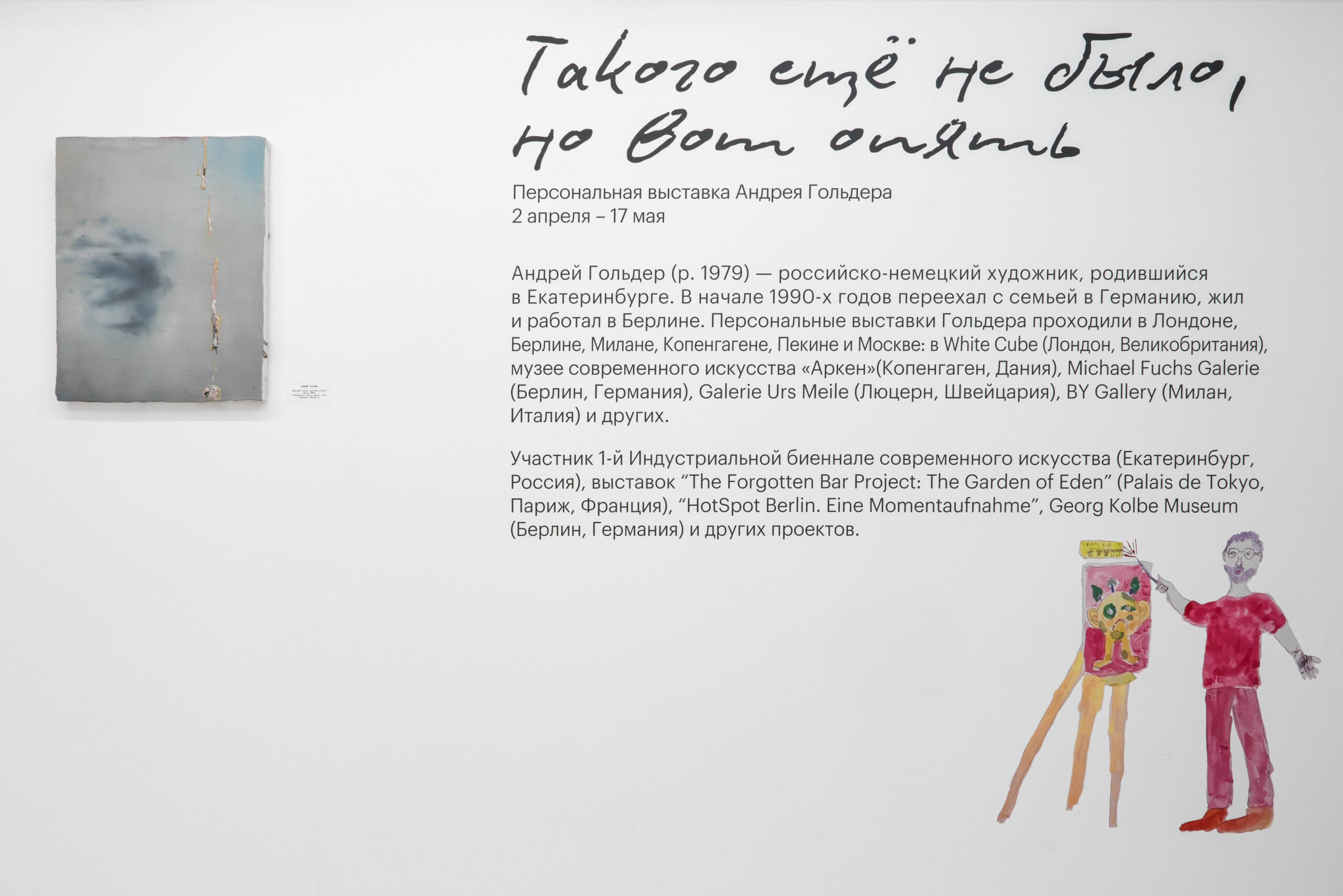
Andrei Golder
Andrei Golder (b. 1979) is a Russian-German artist born in Ekaterinburg. In the early 1990s he moved with his family to Germany, lived and worked in Berlin. Golder’s solo exhibitions have been held in London, Berlin, Milan, Copenhagen, Beijing and Moscow: at White Cube (London, UK), Arken Museum of Contemporary Art (Copenhagen, Denmark), Michael Fußhs Galerie (Berlin, Germany), Galerie Urs Meile (Lucerne, Switzerland), BY Gallery (Milan, Italy) and others. Participant of the 1st Industrial Biennale of Contemporary Art (Ekaterinburg, Russia), exhibitions “The Forgotten Bar Project: The Garden of Eden” (Palais de Tokyo, Paris, France), “HotSpot Berlin. Eine Momentaufnahme”, Georg Kolbe Museum (Berlin, Germany) and many other projects.
Golder works mostly in oil painting, but creates sculptures and drawings as well. Working with canvas and oil paints, he applies layers densely, creating impenetrable surfaces that refer to a neo-expressionist aesthetic challenging both the orderliness of the Leipzig School and the inert post-conceptual aridity. The energy of Golder’s work is based on the aestheticisation of imperfection, monstrosity and what is considered ugly due to the dominance of notions of conventionality. His work shows the eternal confrontation between the decay, fall and trauma of the imperfect and the world of average normality and propriety: Golder fractures the human body, leaving parts that are both attractive and repulsive in their otherness, referring to the paintings of Francis Bacon. Golder reshapes the history of painting, referring to Rubens’ corporeality, Rembrandt’s palette or Matisse’s direct work with colour and space, putting trends and schools through the meat grinder of his method to create something vivid and frighteningly real. The artist is inspired by the clash of the impossible by Dubuffet and Velázquez, the contrasts and facets of absurdity in Russian literature. Like Oswald de Andrade, who wrote his 1928 Anthropophagic Manifesto on the cannibalisation of foreign Western cultures by South America to create its own discourse and language of artistic expression in a decolonial optic, Golder absorbs the history of Western European painting and transcends its controlling presence.
Through his liberation from the rigid framework of realism, he creates a space of personal mythology in figurative painting: grotesque demonic images recall the constant juxtaposition of vitality and decay, love and the pain of its impossibility. The figures-characters of his works are oppressed by the light of an unattainable ideal of beauty and order, so they exist in their own chaotic world of eternal outsiders, traumatised by a reality that pushes everything “inadequate” to the periphery of our gaze. Golder snatches this periphery from the darkness, placing it at the centre of his works with care and simultaneous irony, readable in the titles: a rodent crushed by a voluminous human body is “Kitchen Accident”, a combination of bird droppings and bird remains is “Revenge”, and “Painting” is a paint-stained rag and a row of grotesquely ugly teeth. Subtle irony combined with ominous subjects enhance the reality effect of the complex world with associative metaphors, seen by Golder through the lenses of personal experience.

